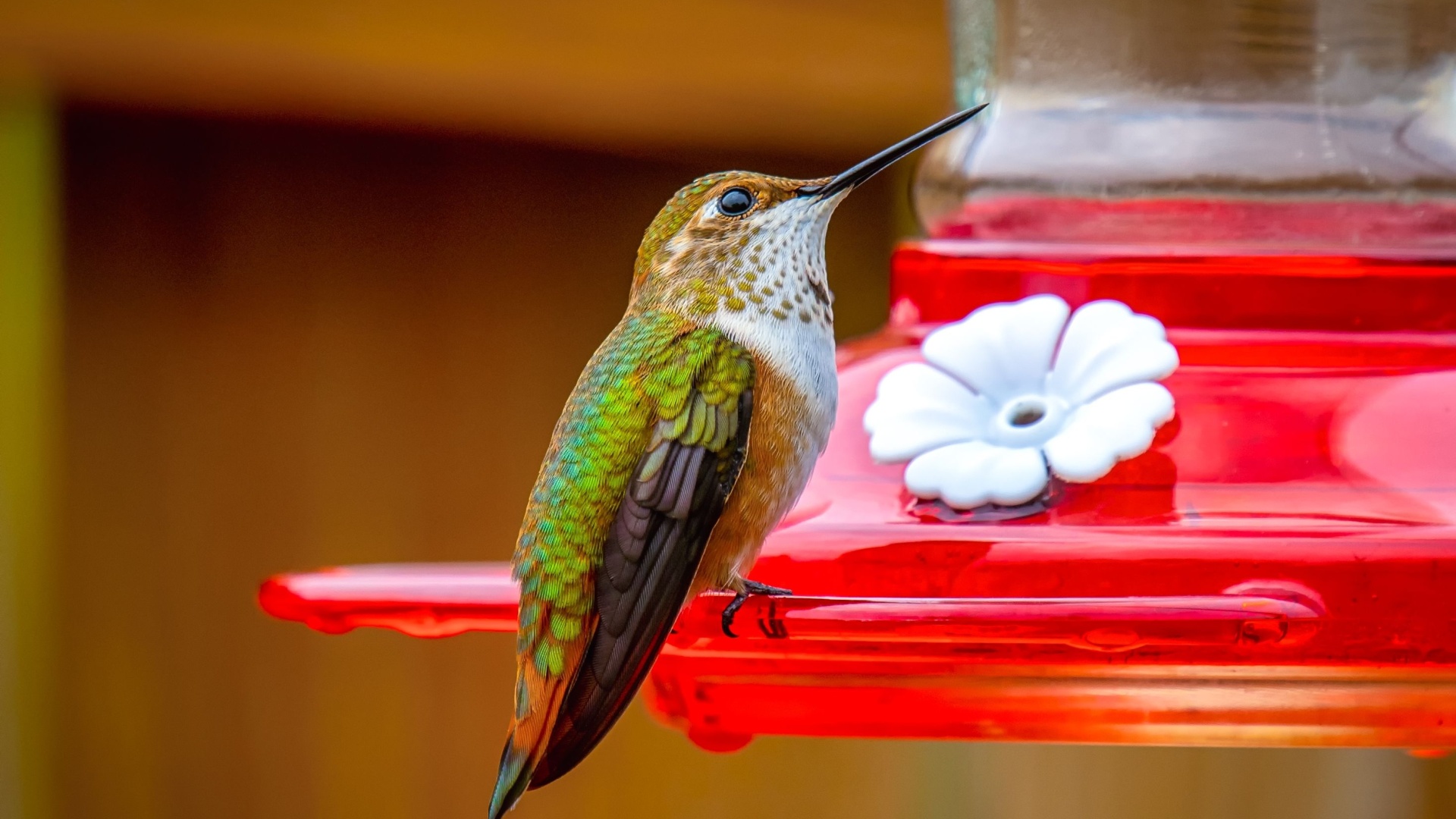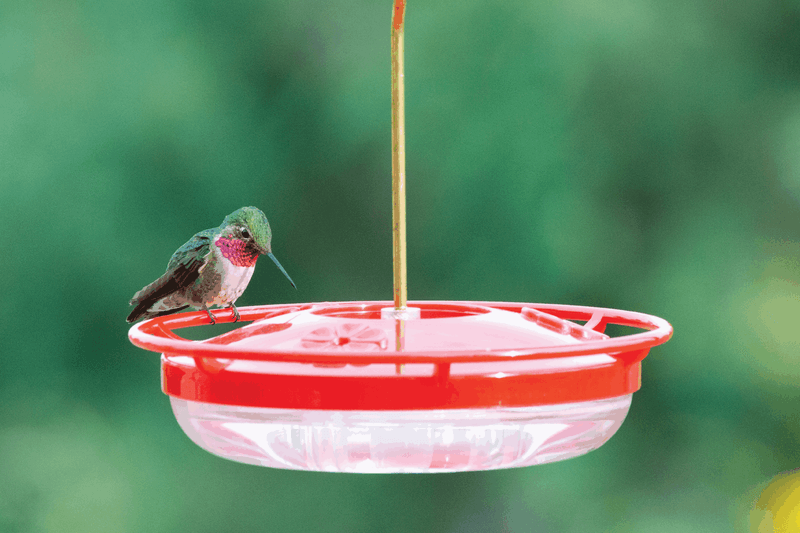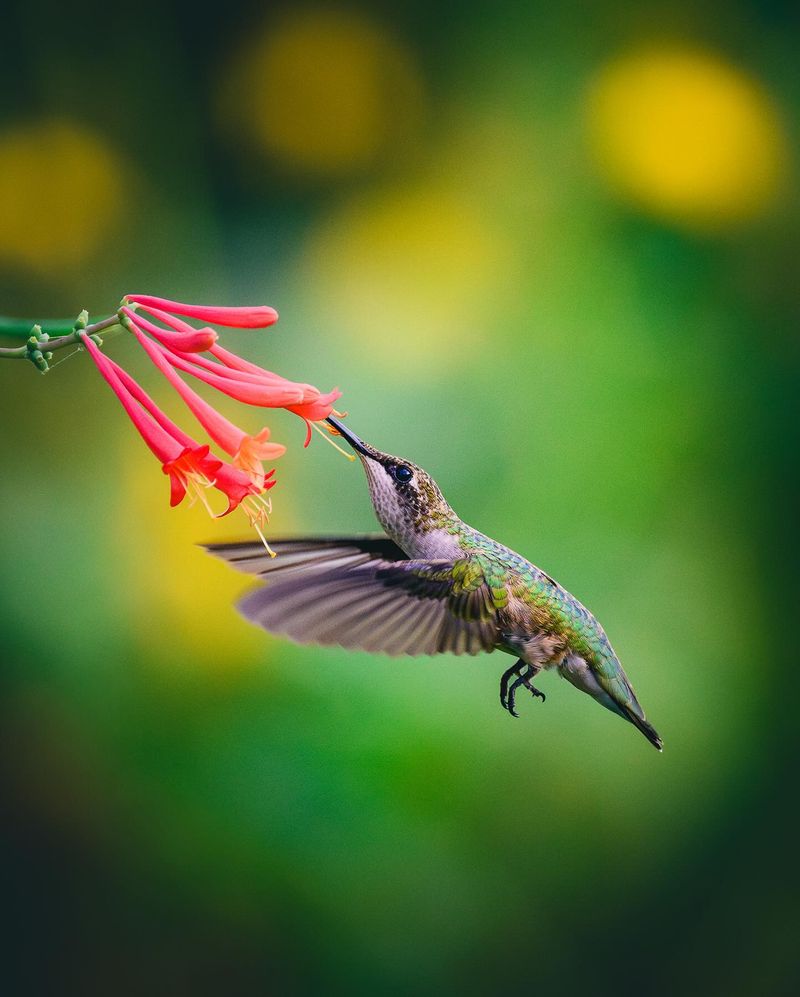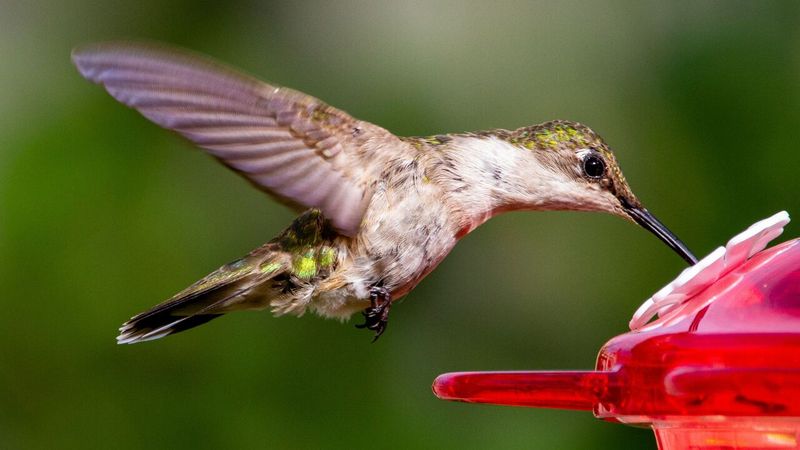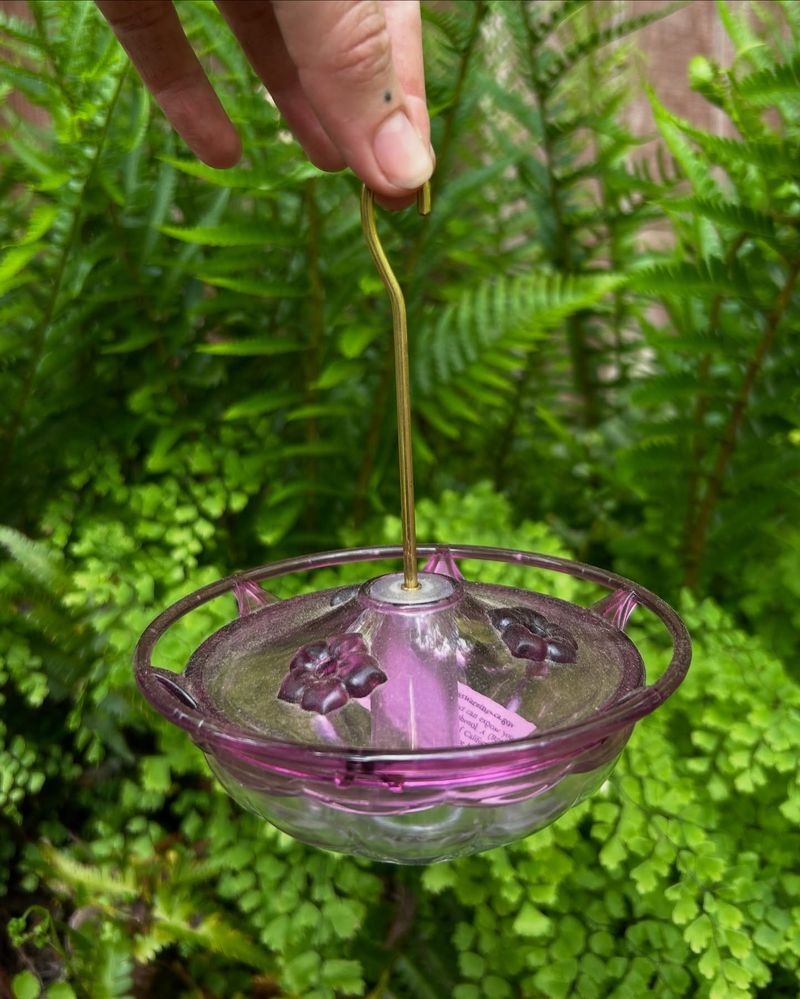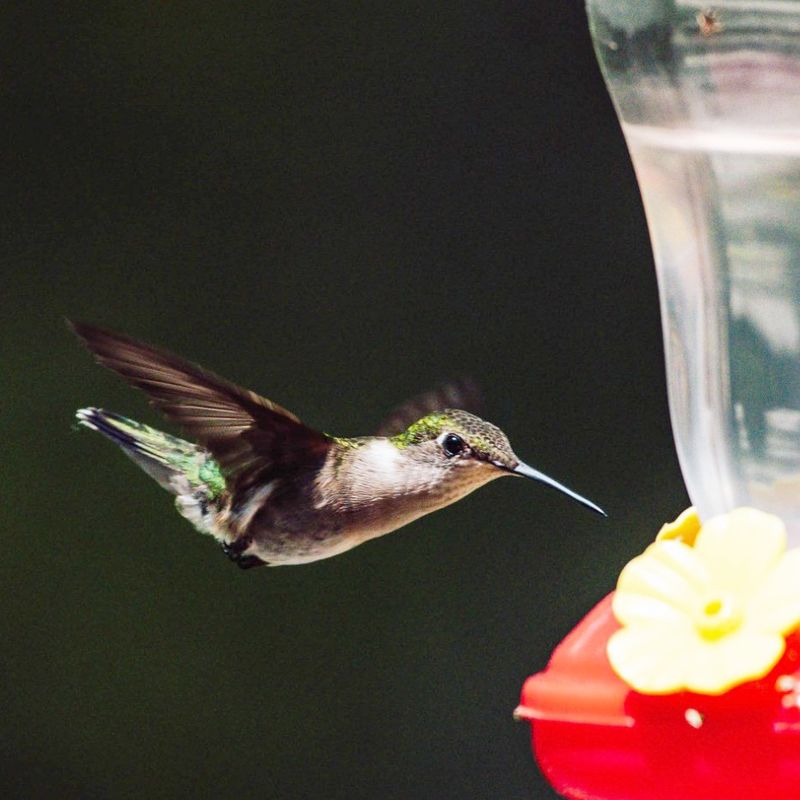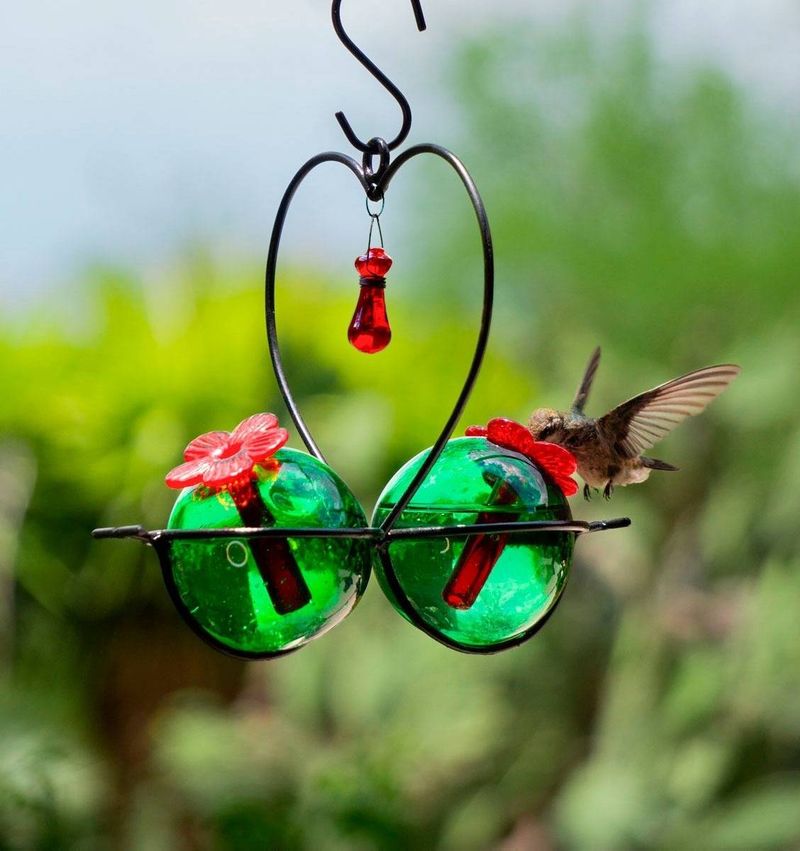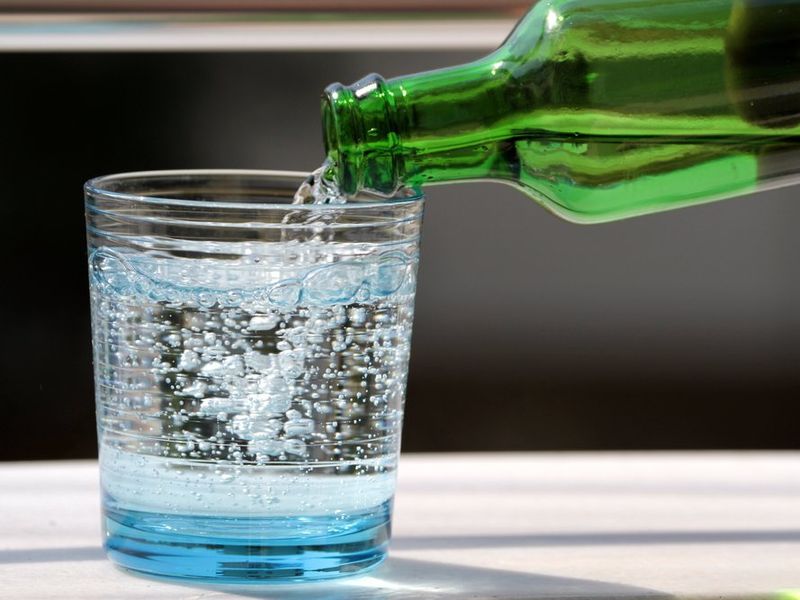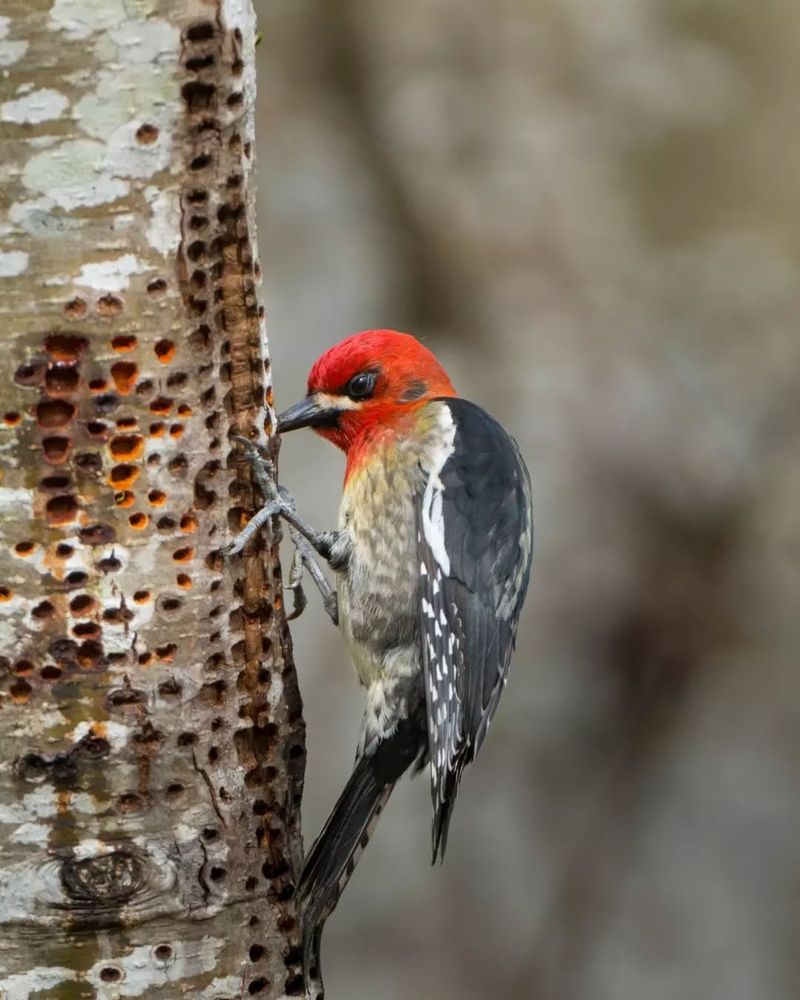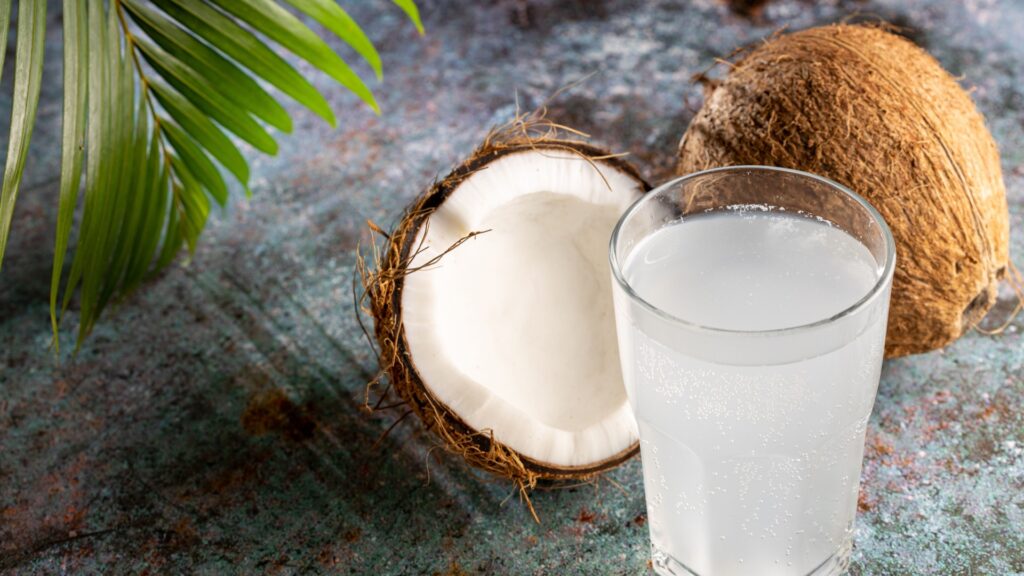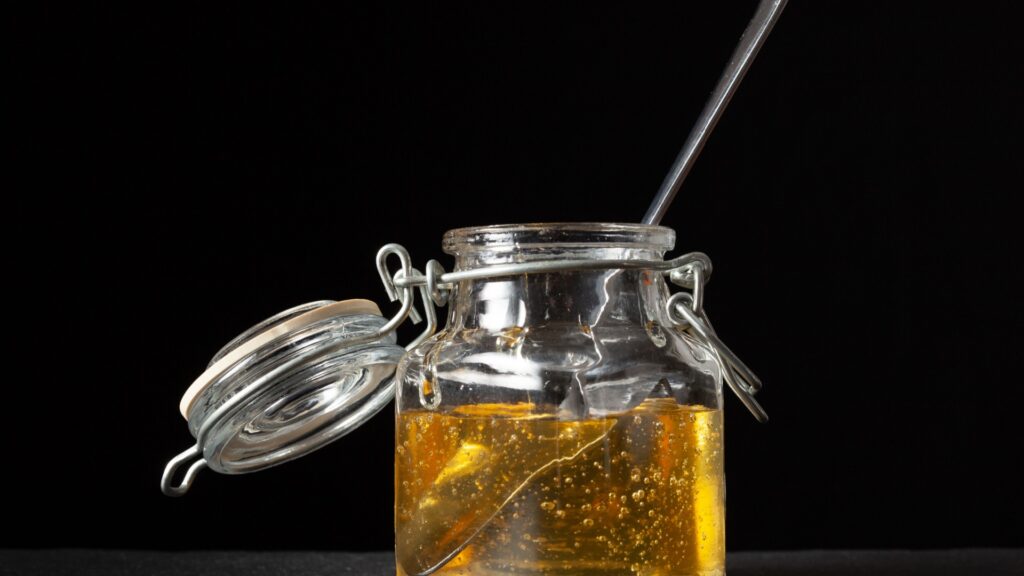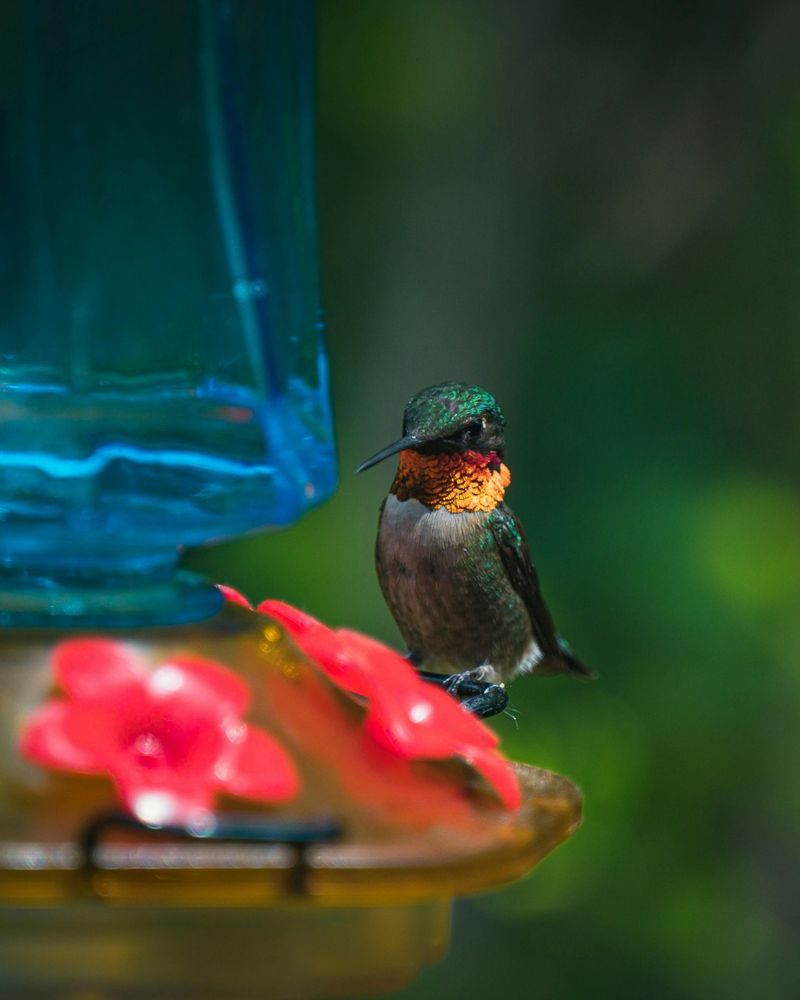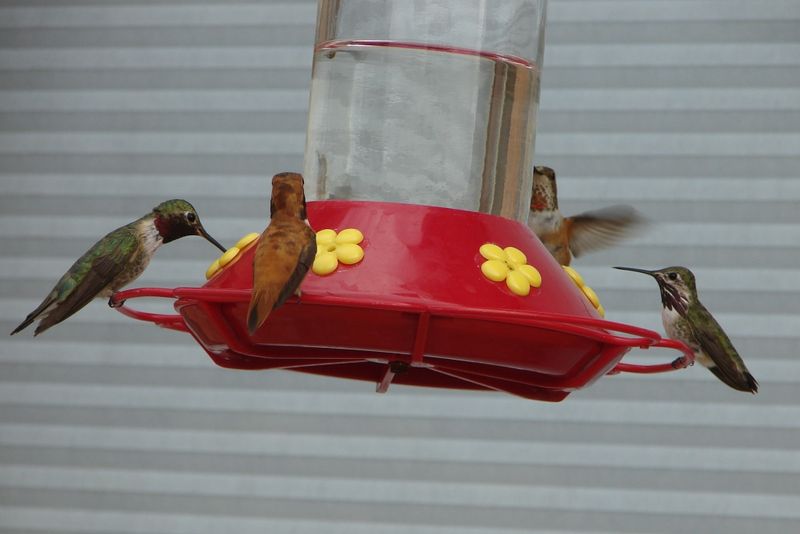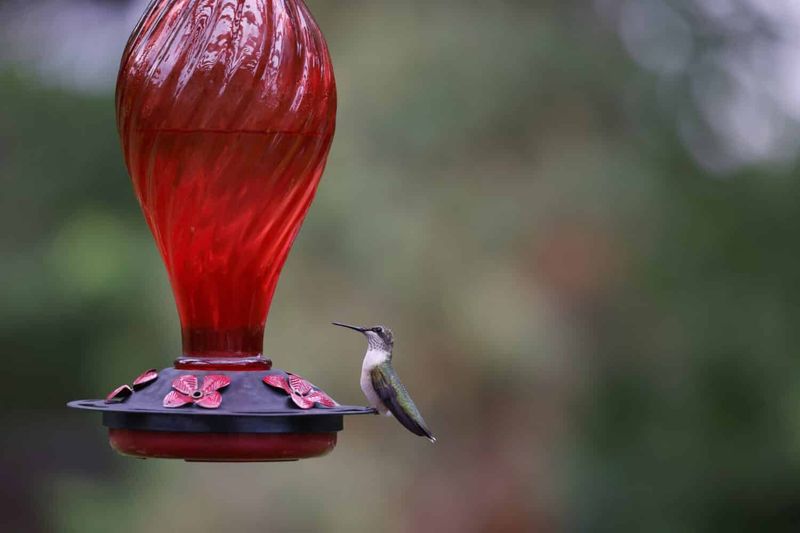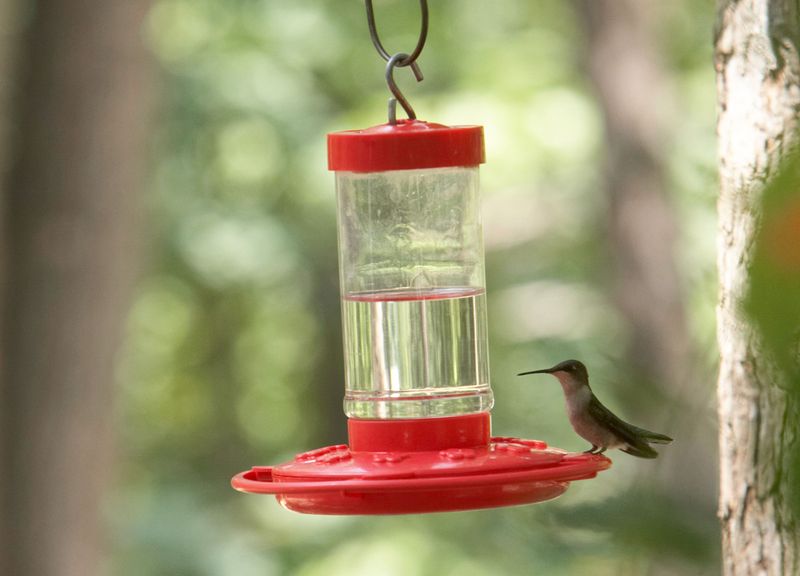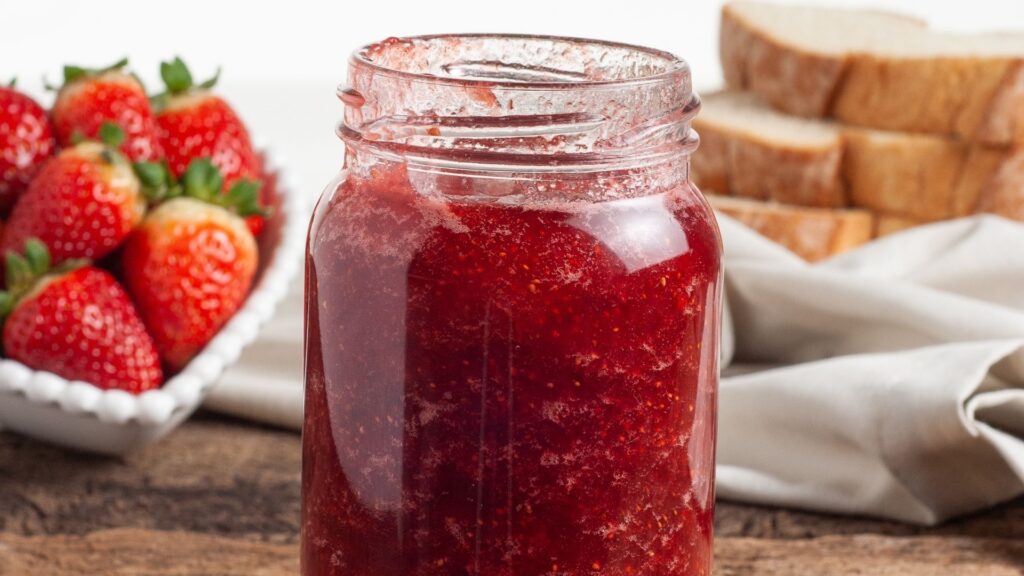Hummingbirds bring a little spark of enchantment to any garden, zipping and darting like living jewels with wings. Their shimmering feathers and lightning-fast moves are nothing short of mesmerizing. While sugar water has long been the go-to crowd-pleaser, it’s far from the only trick in the book for luring in these tiny aerial marvels.
With the right nectar alternatives—and a few cautionary don’ts—you can roll out the red carpet and turn your backyard into a buzzing, fluttering paradise they’ll keep coming back to all season long.
1. Fruit Juice Dilutions
Natural fruit juices diluted with water create a sweet alternative that hummingbirds find irresistible. Mix one part juice with four parts water to achieve the right consistency and sweetness level. Cranberry, apple, and grape juices work particularly well, though avoid citrus varieties as they’re too acidic.
Always use juice without artificial sweeteners or preservatives. Remember to change these mixtures more frequently than sugar water as they ferment faster, especially in warm weather.
2. Flower Nectar Mixes
Commercial nectar mixes mimic the natural nectar found in hummingbirds’ favorite flowers. These pre-made powders or liquids contain the perfect balance of sucrose and essential minerals that wild hummingbirds crave.
Many high-quality products include extra vitamins and electrolytes to support these high-energy birds during migration seasons. Look for mixes without red dye or preservatives. Simply follow package directions for mixing with water, then fill your feeders as usual.
3. Maple Syrup Solution
Pure maple syrup (not pancake syrup) makes an excellent occasional treat for hummingbirds. Mix one part real maple syrup with four parts water for a natural alternative to refined sugar. The subtle flavor profile contains minerals and antioxidants not found in white sugar.
Hummingbirds particularly enjoy this mixture during cooler weather when they need extra calories. Be warned that this solution spoils quickly, so clean feeders thoroughly every two days when using this sweet alternative.
4. Floral Plantings
Creating a garden filled with nectar-rich flowers provides the most natural feeding option for hummingbirds. Trumpet vine, bee balm, cardinal flower, and salvia produce abundant nectar that these tiny birds adore. Plant varieties with staggered blooming seasons to ensure continuous food sources from spring through fall.
Native species adapted to your region typically produce more nectar than exotic varieties. Bonus: flower gardens attract insects, which provide essential protein that hummingbirds need for complete nutrition.
5. Honey Water Mixture
Raw, unprocessed honey diluted with water creates a natural nectar alternative. Mix one part honey with four parts warm water, stirring until completely dissolved. Allow to cool before filling feeders. Honey contains beneficial enzymes and trace minerals that plain sugar lacks.
However, this mixture ferments quickly—sometimes within 24 hours in hot weather. Change honey water daily and clean feeders thoroughly to prevent harmful mold growth that could sicken your feathered visitors.
6. Butterfly Feeders
Surprisingly, many butterfly feeders double as excellent hummingbird attractants! These specialized feeders typically feature bright colors and shallow feeding dishes perfect for hummingbird access. Fill butterfly platforms with overripe fruit pieces like bananas or oranges.
The fermenting fruit attracts fruit flies—a protein source hummingbirds will happily hunt while visiting your garden. Position these feeders near flowers for maximum effectiveness, creating a complete feeding station that serves multiple purposes.
7. Protein-Enhanced Mixtures
Hummingbirds need protein along with sugar for complete nutrition. Add a tiny pinch of protein powder (unflavored and unsweetened) to your regular nectar recipe to create an enhanced food source these birds will appreciate.
Commercial insect-based protein supplements designed specifically for hummingbirds are now available at specialty bird shops. These products mimic the insects that make up 60-80% of a wild hummingbird’s diet. Use protein supplements sparingly—once weekly is sufficient during breeding season.
8. Fruit Feeders
Fresh fruit feeders attract hummingbirds indirectly by bringing in fruit flies and other tiny insects. Hang halved oranges, grapefruit, or melon rinds from tree branches near your regular hummingbird stations. The sweet aroma draws insects, which become living protein snacks for hungry hummingbirds.
Replace fruit every few days before it molds or attracts unwanted pests. This method creates a natural feeding environment that encourages hummingbirds to display their impressive aerial hunting skills.
9. Mineral-Enhanced Water
Adding a tiny pinch of sea salt or mineral supplement to your hummingbird mixture provides essential electrolytes these high-metabolism birds need. One grain of sea salt per cup of nectar is sufficient—never use more.
During hot weather or migration periods, these minerals help prevent dehydration. Some bird enthusiasts add a drop of liquid electrolyte solution designed for birds instead of salt. Always mix thoroughly and use sparingly, as too many minerals can be harmful rather than helpful.
10. Tree Sap
Natural tree sap serves as an important food source for early-spring hummingbirds, especially in northern regions. Sapsuckers (a type of woodpecker) drill holes in trees, creating sap wells that hummingbirds regularly visit.
You can mimic this by creating artificial sap feeders using specially designed commercial products. These simulate natural sap flows without harming trees. Position these near your regular feeders in early spring when natural food sources are scarce and migrating hummingbirds first arrive.
11. Coconut Water Dilution
Diluted natural coconut water offers a hydrating, slightly sweet nectar alternative packed with electrolytes. Mix one part unsweetened, pure coconut water with three to four parts water before filling your feeder. This mixture mimics the mineral content found in some natural nectars and supports hydration during hot weather.
Ensure the coconut water is free from added sugars or preservatives, and avoid flavored varieties. As with fruit-based options, this mix should be changed frequently—every 1–2 days—to prevent spoilage, especially in summer heat.
12. Agave Nectar Solution
Agave nectar, derived from the agave plant, is a natural sweetener that can serve as an occasional hummingbird treat. Mix one part organic, light agave nectar with four parts warm water, then allow it to cool before use. Its mild flavor and smooth texture make it appealing, especially during migration when birds seek high-calorie fuel.
Be sure to choose raw, additive-free agave and never use flavored or processed varieties. Like other natural alternatives, this solution spoils quickly—replace every two days and clean feeders thoroughly to prevent mold and fermentation. Use this mix sparingly as a supplement, not a daily staple.
13. Never Use Red Food Coloring
Never add red food coloring to your hummingbird mixtures! This common practice can potentially harm these delicate birds. The chemical compounds in artificial dyes may cause health problems or even liver damage over time. Instead, use feeders with built-in red components to attract attention.
Hummingbirds are naturally drawn to red, but they’ll find clear nectar just fine in a feeder with red parts. If you’ve been using dye, thoroughly clean your feeders before refilling with dye-free nectar.
14. Avoid Artificial Sweeteners
Artificial sweeteners like aspartame, sucralose, or saccharin should never be used in hummingbird nectar. These provide zero calories to birds that need massive energy intake to survive. Hummingbirds have the highest metabolism of any animal except insects, burning through calories at an astonishing rate.
Sugar substitutes offer no nutritional value and could potentially disrupt their delicate digestive systems. Always use real sugar or natural alternatives that provide actual calories these tiny powerhouses require.
15. Honey Straight From the Jar Isn’t A Good Choice
Undiluted honey should never be offered to hummingbirds despite seeming like a natural choice. Pure honey is too thick for their specialized tongues and can actually gum up their delicate feeding apparatus.
Even worse, undiluted honey ferments rapidly outdoors, developing harmful fungi and bacteria. The high sugar concentration can also dehydrate birds rather than nourish them. Always properly dilute honey with water if using it as a nectar alternative.
16. Steer Clear Of Brown Sugar Solutions
Brown sugar contains molasses and impurities that can harm hummingbirds’ delicate digestive systems. The iron content in molasses may build up in these tiny birds, potentially causing liver damage over time.
Additionally, brown sugar solutions ferment much faster than white sugar mixtures, growing harmful bacteria and fungi. The darker color also makes it harder to spot contamination in feeders. Stick with plain white sugar or other recommended alternatives for the health and safety of your hummingbird visitors.
17. Avoid Moldy or Fermented Solutions
Neglected feeders quickly develop harmful mold and bacteria that can be deadly to hummingbirds. Even slightly cloudy nectar indicates fermentation has begun and can cause fatal fungal infections in these birds.
Clean feeders thoroughly every 2-3 days in hot weather, every 5 days in cooler temperatures. Use a bottle brush and vinegar solution to scrub all surfaces, especially around feeding ports. Never top off old nectar with fresh—always empty, clean, and refill completely.
18. Never Use Jams Or Jellies
Offering jams or jellies, even fruit-based ones, is dangerous for hummingbirds. These spreads contain high levels of processed sugar, preservatives, and often artificial colors—all of which can disrupt a hummingbird’s digestive system and lead to fatal fungal infections.
Additionally, the sticky texture can coat their beaks and feathers, interfering with their ability to fly or feed properly. While these might attract birds visually, they pose serious health risks. Stick to nectar alternatives that are closer to what hummingbirds naturally consume.

